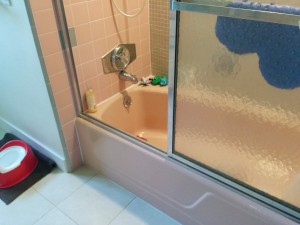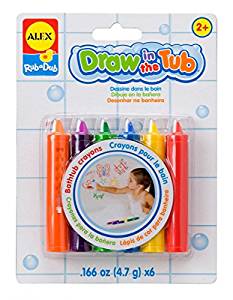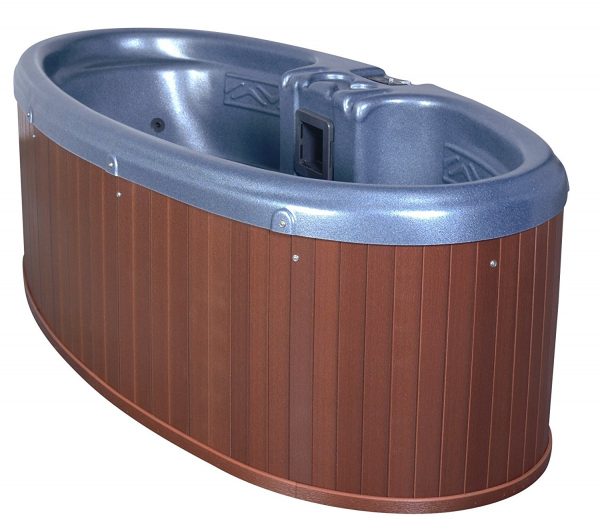Q: I’m concerned the original bathtub that came with my older home might have Lead. What should I do?
For those new to the Lead Safe Mama website:
Tamara Rubin is a multiple-federal-award-winning independent advocate for childhood Lead poisoning prevention and consumer goods safety, and a documentary filmmaker. She is also a mother of Lead-poisoned children (two of her four sons were acutely Lead-poisoned in 2005).
- Tamara owns and runs Lead Safe Mama, LLC — a unique community collaborative woman-owned small business for childhood Lead poisoning prevention and consumer goods safety.
- Since July 2022, the work of Lead Safe Mama, LLC has been responsible for six product recalls (FDA and CPSC).
- All test results reported on this website are science-based, accurate, and replicable.
- Please check out our press page to see some of the news coverage of our work, linked here.
Originally published on June 17, 2014
Updated in April 2017
Question from Lucy (via the MisLEAD: America’s Secret Epidemic Facebook page):
Hi Tamara, We just bought a new house and it has the original bathtub (1956).
- What would be the best and most effective way to test for Lead?
- I’d also like to test dishes, toys, water. What do you suggest for that?
- I noticed from a previous post that Ikea dishes were on the safer side. Would that apply to the clear glass ones too or just white?
Thank you for your time! Lucy
ANSWER:
Hi Lucy… here’s an article on how I test for lead. I think it answers some of your questions! Here’s another piece about XRF technology and related testing options (including the XRF I usually use when testing for Lead in consumer goods).
The cheapest, easiest, and most effective way to test for Lead in a tub is to use a LeadCheck swab. In almost all cases, a tub that is positive for Lead will instantly turn a LeadCheck swab pink or red! In some cases, a tub will have Lead but the finish will not be deteriorating/ chalking and it may not test positive with a swab (in cases like that, an XRF will give a definitive, quantitative result). In some cases, the tub may take a while to turn red (depending on the type of coating).
—
I recommend testing a dry tub, and if it doesn’t turn red right away, check back in a couple of hours to see if either the swab used or the spot tested has turned pink or red (this is true for many of the “off-label” instances — where LeadCheck swabs may* detect Lead on metal items or items with a metal substrate). *PLEASE NOTE: Strictly speaking, any chemical reagent swabs such as LeadCheck are only intended for testing house paint, and so shouldn’t be considered in any way a definitive or reliable substitute for XRF testing of anything other than paint; that said, in some cases — such as a badly chalking Leaded porcelain or enamel tub — you can often get an easy positive detection using them.
Here’s an article I wrote about testing for Lead in dishes.
Here’s a company a friend of mine owns that sells DIY tests for Lead in water. Your city or county health department may also offer free Lead-in-water test kits.
Here’s a link to some of the testing for Ikea dishware I have conducted. Modern clear glass is always a good choice (by pretty much any brand) — here are several pieces about that.
Here’s a link to some of the Lead-free kitchen items (including dishes) I have tested as well.
And finally, here’s a link to the dishes I have in my home (and also the dishes I am going to get soon because we’re missing a few after 12 years!).
-Tamara
If you have an additional answer to this question, please post it in the comments below.
Another version of this question I have gotten quite often:
Question: “Is there Lead in bathtubs? Really?”
Short Answer: “Yes!”
Long Answer:
Lead in older bathtubs is a big issue — and yet usually overlooked as a potential source of toxicity for children. Both porcelain and enamel coatings can have extremely high levels of Lead — both in the surface coating (glaze) and substrate. In my experience, using an XRF and testing tubs around the country in my travels, I have seen up to 300,000 parts per million (and on occasion even higher). Since it can be quite difficult or costly to remove and/or replace a bathtub, in many cases the tubs stay in place and the hazards (from deteriorating surfaces) persist — even after an extensive remodel or update. I do know several families who have children that were likely poisoned as a result of the bathtub, so this is a worthwhile thing to address.
Some of the links on this page may be affiliate links where a purchase made
after clicking will support this website without costing you extra!
Concerns:
My biggest concern is this: As a very busy mother with four children, I used the tub more than just as a vessel for bathing my children. I would often put two or three kids in the tub at a time so they could have fun water play time while I folded laundry or did dishes nearby (our tub in our last two houses has been right next to the kitchen).
Especially since I have Lead-poisoned children with a whole host of sensory issues and needs, putting them in a tub full of warm water usually calms them down and brings them to a happy place — which is a very valuable resource for me. For me, this meant I would put my kids in the tub at least twice a day (morning and evening) and sometimes more if they requested it (or got very dirty mid-day!).


Any risk, even a minute risk, is not worth it for my children (and in my opinion a leaded tub is a risk for any child).
Is a child going to be Lead-poisoned exclusively from exposure to the Lead in their bathtub? While it is possible (and again, I know families where this has happened) in most cases the answer to this is “likely not.” A vintage tub (especially one in an older home) is not likely going to be the sole source of a child’s Lead poisoning.

Our main solution in our home has been to get a two-man hot tub (from Craig’s List for $400, similar to the one pictured here), and while my sons bathe in the shower (some more than others), they do their soaking and water play in the hot tub. Even though they are older now (in 2017 they are 8, 12, 14, and 20), they still spend between 30 and 60 minutes a day in the hot tub, each and every day. But I know it is safe.
Solutions:
- Shower with your kids (instead of bathing them in the tub)!
- Bathe your smaller kids in the sink (we bought a Lead-free double-wide sink at Lowe’s from American Standard). My eight-year-old still actually fits in the sink, mostly… (He’s pretty skinny!)
- Bathe your kids in other alternative plastic tubs that you can put inside your tub or on the floor of the shower (please use the same attention to drowning risk that you would otherwise use!). For a short while, we even went so far as to put a small kiddie pool on the floor of our walk-in shower (make sure the floor can handle the weight of the additional water if you are going to do something like that!).
- Get a new plastic/ fiberglass Lead-free tub insert system that just goes in/over your existing tub/shower stall.
- Get a new Lead-free replacement tub if you can afford it — please note that this can require breaking down walls and doorways depending on the size of the old tub and the new tub, so is not always the simplest of projects. Make sure to test the tub first (or see the white paper from the manufacturer) before bringing it into your home. Newer (the last 20 years) cast iron tubs can also have Leaded enamel and ceramic coatings — so newer does not always equal Lead-free!
- Consider getting a hot tub for soaking! They can often be found free or cheap on Craigslist!
- Note: Kids don’t actually need to bathe as often as Americans tend to bathe them!!!!!
Things to avoid:
- I avoid repurposed/recycled tubs at all costs!
- I avoid tub refinishing at all costs. Generally, it does not work (the new finishes fail sooner than later) and it is very toxic with the potential to contaminate your whole home with Lead dust and other toxic chemicals if the refinisher does not know what he is doing.
Note: I have tested several recently manufactured (brand new, in the last five years) tubs that were completely Lead-free! So newer does seem to be better in this case!
As always, please let me know if you have any questions.
Tamara Rubin
Unexpected Lead Expert
Mother of four boys
Some articles:
Dallas Morning News — October 2013
“Old bathtubs found to pose lead exposure risks for children”
From the following site: http://www.fhco.org/lead.htm — “In addition to lead-based paint on the walls or salvaged pieces brought into the home, it has been determined that about 75% of pre-1978 bathtubs have lead in their glaze and that about 40% of these tubs will have measurable levels of lead dust when dust samples are collected from the surface of the glaze. Older claw foot tubs, like well-appointed front doors, are another popular retro salvage yard item.”
Another piece (from 1995):
Lead in worn ceramic glaze confirmed
From Hudson Valley Parent:
Lead in Bathtubs Could Be Poisoning Your Child
Where Lead Hides from the University of Southern California
Facts about Lead in Porcelain & Ceramic Glazes, by the Vermont Housing & Conservation Board’s Lead Hazard Reduction Program
An old article of mine that’s worth checking out.
And, on top of all this, here’s a write-up on the CDC NIOSH Science blog from February 4, 2013:
Dangers of Bathtub Refinishing
Another good piece: Ceramic Tile Institute of America, Ceramic Tile Lead Hazards and Miscellaneous Other Lead Risks in Residential Remodeling and Construction, by Judson Bryant
Thanks for reading! If you have another link you think belongs here, please let me know and I will add it to this collection or you can post it as a comment on this article.
Affiliate link disclosure: If you choose to purchase any items after clicking the Amazon links above, Amazon will pay Lead Safe Mama, LLC a small kickback as a thank you for sending business their way. It doesn’t cost you anything extra and helps support this website, allowing us to keep sharing information about childhood Lead poisoning prevention (as well as making it possible to continue sharing about safe products for your home and family). Spreading this information helps families everywhere protect their children from potential environmental toxicity in their homes. I only link to products that are the same as (or very similar to) ones that I either have direct personal experience with in my home or that I have personally tested with an XRF instrument and found to be Lead-safe or Lead-free. (Updated April 2017)
Never Miss an Important Article Again!
Join our Email List






I know this is important, but… I am afraid to test my tub. I use it a few times a day for my own health issues. My son takes a bath much less often… I am afraid it will show lead, and then I will have to deal with it. My to do list is so long already, I am overwhelmed. My focus lately has been testing things for radioactive contamination, and I think if I have one more thing to worry about… I don’t know what I will do.
Thank you so very much for all this wonderful information! We are actually about to start remodeling our bathroom. My daughter does have elevated lead levels and we recently moved because of it. What do you recommend as the safest new bathtub to buy?? Which ones did you test that didn’t have any lead? I can’t seem to figure out how to know for sure if a new tub has lead in it. We are ordering online and not in person because we live in Wyoming.
We are getting a new tub and I would ike to figure out what material is best….. Stainless steel? carved natural stone?? Any thoughts on these options
Can you provide any information about removing a tub that may have lead in it? We plan to remove an old cast iron tub, but I know that requires either cutting it or smashing it up, which seems like it would create a lot of lead dust in the bathroom. Any suggestions? Thanks!
Hi Juli – Did you ever figure out the safest way to remove your old cast iron tub? We have two that are leaded and I’ve been trying to figure out for years how to safely remove them. Most folks say they’d have to sledge hammer it up, and I just cringe at the thought.
Hi Kelly – we removed ours in one piece – we broken open the walls around the doorway and rebuilt the doorway and reinstalled the door afterwards.
T
Hi Tamara,
We have a tub that has tested positive for lead. Currently we are just not bathing our little one in it but have considered getting it removed. We talked to a company about lead abatement. They said they seal off the room, make the room zero/negative pressure and then crush and remove the old tub. They then thoroughly clean the bathroom. I thought it’s be best just to remove it in one piece but he says that’s impossible without really demolishing other parts of the house. Is this safe to do it this way? Any thoughts on the best way to proceed?
Hi Tamara, Can you please refer us to the list of recently manufactured tubs that you tested as lead-free? I’m looking to replace my tub soon and want to not be replacing it with something just as bad.
Hi Andrea,
I am sorry – I don’t have a list like that. I don’t track each and every product that I test, as I have tested tens of thousands of things. I think you best bet is to ask the manufacturer (of a tub you are interested in) for the white paper on that tub.
Tamara
Thanks for your quick response! I appreciate all that you do here.
You are very welcome! 🙂
-Tamara
Do fiberglass and acrylic tub/shower combinations usually have lead?
Hi Anna,
Thanks for commenting. These tubs are generally Lead-free.
Tamara
Have you ever seen a fiberglass/acrylic tub test positive?
Yes – vintage ones from the 1980s (ish), very low levels however (relatively).
T
Mine is from 1993. It’s not coated at all.
1993 could be Lead-free, it’s hard to know and the only way to really test this type of material is with XRF testing.
T
Removal involves cutting it from the wall into a couple of pieces. Do you remember any of the readings?
I have tested dozens of them – the highest was probably in the range of 1000 ppm – likely in from the 1980s. Newer ones (post 2000) are generally lead-free.
T
What if you got an old cast iron clawfoot tub and had it taken down to the iron and then refinished?
Hi Michelle,
If they did that off-site and used a lead-free enamel for the new enamel that could be fine. Not all new enamel is lead free.
Tamara
Hello! We recently bought a home with a claw foot tub that needs to be refinished and is most likely lead heavy. While I understand your point that encapsulation will eventually fail, would it be presumably safe to test periodically with a lead tester and then address the issue should it come back positive at some point?
Hi Tamara – we need a permit to remodel our bathroom which could take 5-6 months. We only have ONE bathroom and the tub has tested >9.9 in lead! We have a 6 month old and a 2 year old… my husband refinished the tub with new tub paint hopefully this lasts us a year before we can remodel? What do you think?
Hi, Tamara
We are buying a new tub/shower. Would these standards mean the tub is lead free:
compatible or complies with ASME A112.19.1/CSA B45.2 (Standard for Enameled
Steel Plumbing Fixtures), ADA (American Disabilities Act), ASTM F 462 (Safety Specification for Slip
Resistant Bathing Facilities), WW-P 541 (U.S. Military Federal Specification), HUD-FHA-VA, LEED, and
the Buy American Act, as applicable when installed accordingly.
Thank you!
Just wanted to let you know that the ceramic institute link appears to be spam. Thanks for what you do!